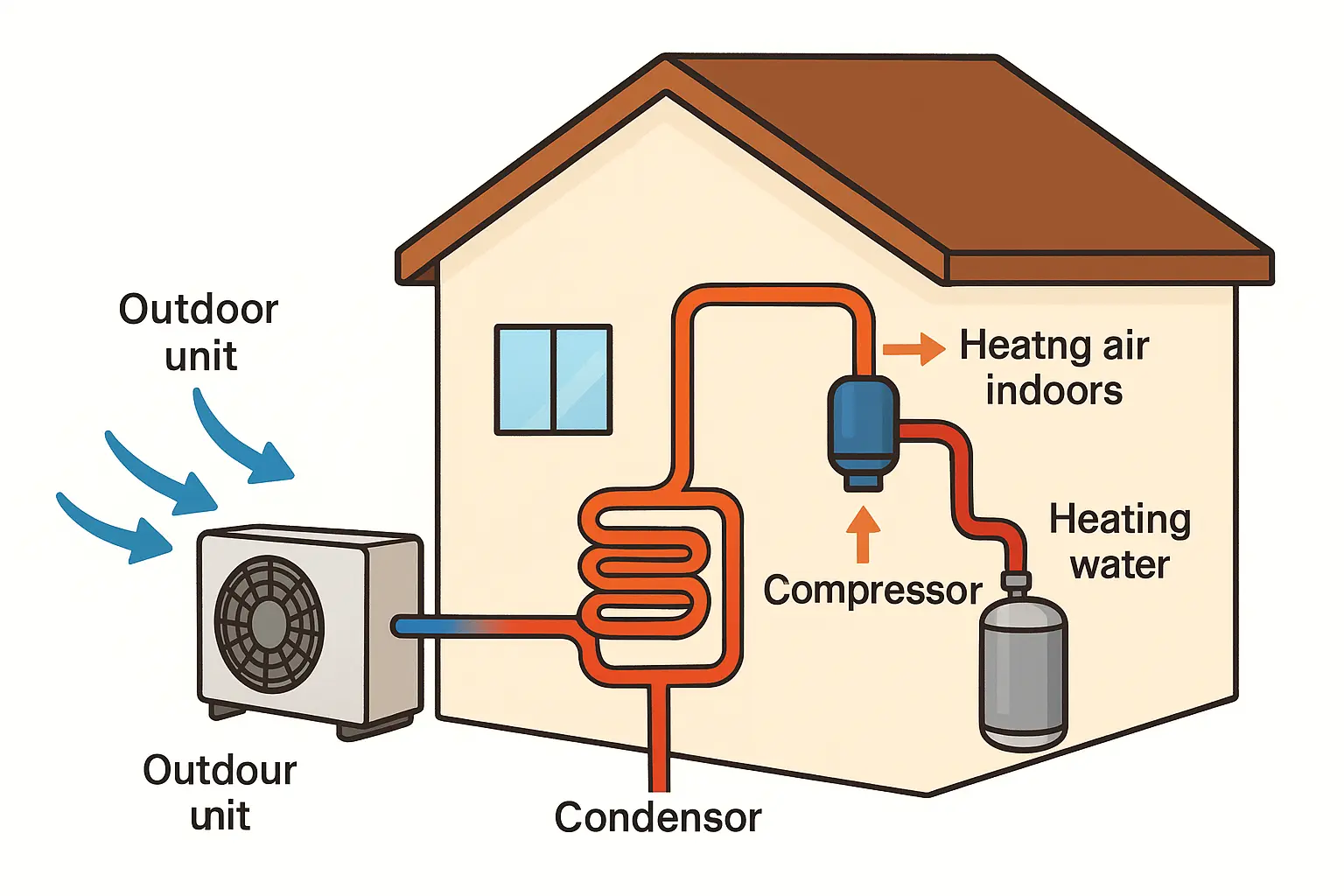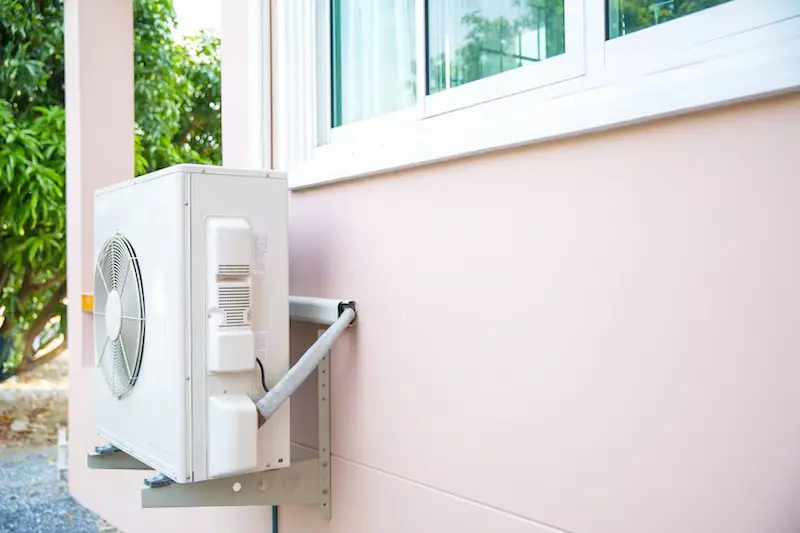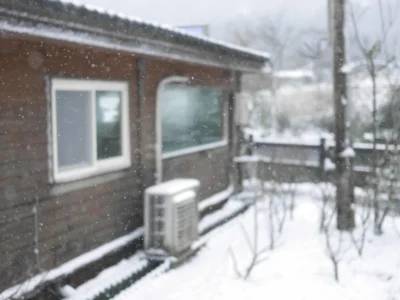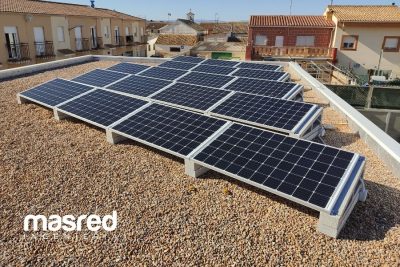Finding the right conditioning system for a home or commercial space can be complicated, given the wide variety of options on the market.
The main features that should influence the purchase decision are price, sustainability, energy consumption, efficiency, and power, and it is essential to cross-reference this data to find the best medium- and long-term investment.
Aerothermal heating, also known as air source heating, is an optimal choice that combines efficiency and sustainability, by extracting energy straight from the air. Let’s see how it works.
What is aerotermia? Understanding the basics of aerothermal heating
What is aerotermia? It is the short term in Spanish for aerothermal heating, a top technology that extracts heat from the air outside in order to heat water and indoor spaces.
Although it may seem that this function would require high outdoor temperatures, this system is capable of generating heat even on cold days, thanks to the application of the principles of thermodynamics. Even on cold days, the air contains thermal energy that can be harnessed through an air source heat pump (ASHP for short).
Aerothermal heating uses only air and electricity and does not require any kind of burning fuel, so it is an environmentally friendly heating solution.
In addition, it can reverse-function in order to cool spaces during the warmer months of the year, so it is a versatile aerothermal system that works all year round.
How do air source heat pumps work? A Comprehensive overview
The key to this kind of heating is the air source heat pump, how do they work?
Air source heat pumps take the heat from the air outside and bring it indoors through a refrigeration cycle.
The process goes as follows:
- The unit placed outside absorbs heat from the air and it goes through a refrigerant fluid.
- The fluid is compressed, thus its temperature rises.
- The heat produced during this compression is either released into the air indoors or used to heat water for a heating system, depending on its setup.
Regarding the setup, there are two main ASHP systems. The first one works air-to-air, meaning the heat is directly released indoors via fans or ventilation ducts, while the second one applies the heat to water that can be used for radiators, underfloor heating or domestic hot water.

Step-by-step explanation
Aerothermal heating systems operate through an air source heat pump (ASHP), which captures thermal energy from the outdoor air and transfers it indoors. This process is based on thermodynamic principles and works efficiently even in cold climates. Here is how it works, step by step:
Heat absorption from outdoor air
The outdoor unit contains a fan that draws in ambient air and directs it over a heat exchanger (evaporator). Inside this exchanger flows a special refrigerant fluid at a very low temperature. The thermal energy from the air causes the refrigerant to evaporate and change from liquid to gas, absorbing heat in the process.
Compression of the refrigerant gas
The now gaseous refrigerant passes through a compressor, which increases its pressure. This process also raises the temperature of the gas significantly, making it suitable to be used as a heat source.
Heat transfer indoors
The hot, pressurized gas flows through a second heat exchanger (condenser), where it releases its heat to either water or air, depending on the configuration of the system:
- In air-to-air systems, the heat is delivered directly to the indoor air through fans.
- In air-to-water systems, the heat is transferred to water that circulates through radiators, underfloor heating systems, or a domestic hot water tank.
Expansion and cycle restart
After releasing its heat, the refrigerant returns to a liquid state. It then passes through an expansion valve, which reduces its pressure and temperature, preparing it to absorb heat from the air again. This completes the cycle, which repeats continuously.
What about cooling in summer?
Most aerothermal heat pumps are reversible, which means the cycle can be inverted during hot months. In this case, the system absorbs heat from inside the building and expels it outside, acting as an air conditioner. We help you plan where and how to install your system for maximum efficiency.
Benefits of aerothermal heating
Aerothermal systems come with a range of advantages:
- Energy efficiency: These systems can achieve efficiency ratings of 300–400%, meaning they generate three to four times more energy than they consume.
- Lower emissions: By avoiding fossil fuels, they significantly reduce a home’s carbon footprint.
- Dual functionality: One system can provide both heating in winter and cooling in summer.
- Low maintenance: With fewer moving parts than combustion systems, maintenance is generally simpler and cheaper.
- Renewable incentives: In many countries, there are government subsidies, tax breaks, or grants for installing heat pump systems.
Whether you’re aiming to reduce your energy bills or your environmental impact, air source heat pumps are a smart long-term investment.
Disadvantages of aerothermal heating
While aerothermal systems are highly efficient and sustainable, there are a few considerations to keep in mind before installation. Most of these challenges have straightforward solutions:
- Higher upfront cost: Installation costs are generally higher than traditional systems. However, this is offset by long-term energy savings and government incentives that reduce the actual investment.
- Reduced efficiency in extremely cold climates: Performance can drop in sub-zero conditions. Modern heat pumps are designed to operate efficiently at -15 °C or lower, and hybrid solutions can guarantee performance in extreme cases.
- Requires good insulation: Poorly insulated homes may not fully benefit from the system’s efficiency. Improving insulation is a smart investment regardless of the heating method, and enhances comfort and energy savings overall.
- Outdoor unit placement: The system needs exterior space for the heat pump.
Outdoor units are compact and quiet, and can be easily installed on balconies, rooftops or garden areas. Shared systems are also an option in apartment buildings. - Limited compatibility with old radiators: Traditional radiators may not work well with low-temperature systems. High-temperature heat pumps are available, or existing radiators can be replaced with more efficient models to ensure compatibility.
Overall, most of these “disadvantages” are either outdated or easily solved. With proper design and installation, aerothermal heating remains one of the smartest and most sustainable choices for climate control today.
Top air source heat pump tips for efficient heating and cooling
The top air source heat pump tips include some key considerations required to find the best equipment for each space for optimum performance with minimum energy consumption.
Key considerations for choosing an air source heat pump system
- Check that the equipment is suitable for the climate in your area. Although many ASHPs are capable of producing heat even at very low temperatures, it is essential to make sure that you choose a system that is suitable for your average temperatures.
- Notice that the insulation of the space can make a difference in the efficiency of any heating system.
- Choose a heating system that is adequately sized for your needs.
- If you already have a radiator system or an underfloor heating system at home, make sure they are compatible with an air source heat pump.
The best tip to choose the right option is to work with a certified professional installer who can assist you according to your specific needs.

How aerothermal heating can save you money in the long run
Upgrading the heating system for a more sustainable option is a smart way to save money in the long run.
While the cost you have to face upfront when installing a heat pump can be higher, its advantages make it more cost-effective with time, as it has lower operating costs –which means lower energy bills– and minimum maintenance expenses. Aerothermal systems can also be paired with solar panels for optimum sustainability.
In some areas, there are even government incentives that minimize the cost of changing the system from combustion to more environmentally friendly options.
Whether you are building a new home, trying to be more conscious about the planet, or simply looking for a way to save on energy costs, aerothermal systems are a smart choice! Have a few questions about aerothermal? We’re around.







